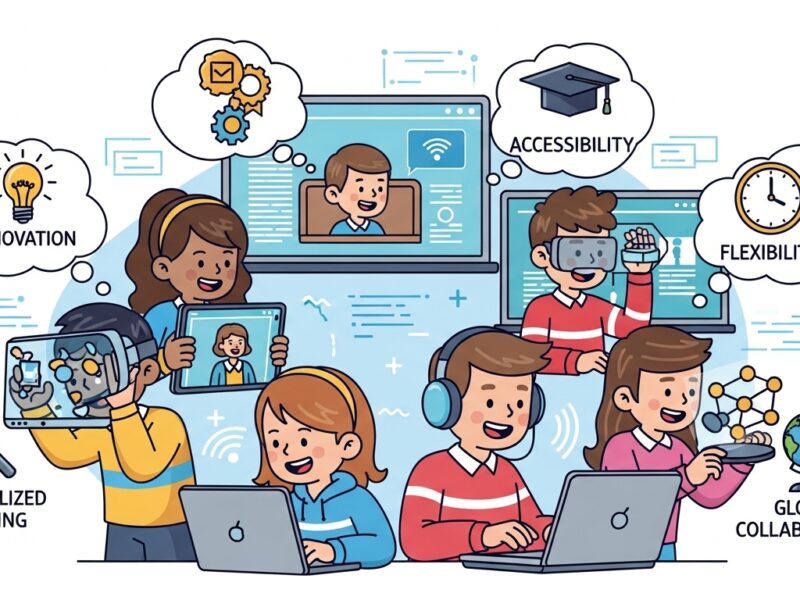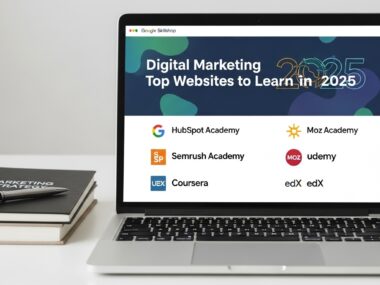Education has never been the same since digital learning came into play. Think about it—years ago, students had to sit in classrooms, depend only on textbooks, and wait for teachers to explain concepts. Today, with just a smartphone, laptop, or tablet, students can access lessons, join virtual classrooms, and even take courses from top universities around the world. This amazing shift is what makes digital learning benefits a hot topic in 2025 and beyond.
In this article, we will take a deep dive into how digital learning is transforming education, the advantages it brings to students, teachers, and professionals, and why it is considered the future of learning. If you are looking for online education advantages, e-learning benefits, and how technology is changing schools and workplaces, then this guide is for you.
What Is Digital Learning?
Digital learning is the use of technology—such as the internet, online platforms, mobile apps, and digital tools—to deliver education. It goes beyond just reading e-books or watching YouTube tutorials. It covers online courses, virtual classrooms, learning apps, gamified education platforms, and even AI-powered learning assistants.
In simple terms, digital learning makes education more flexible, accessible, and interactive.
Top Benefits of Digital Learning
Now let’s break down the key advantages of digital learning and why it has become the backbone of modern education.
1. Accessibility Anywhere, Anytime
One of the greatest benefits of digital learning is accessibility. With digital platforms, students can learn anytime and from anywhere. Whether you live in Lagos, New York, or a remote village, you can still access world-class education as long as you have an internet connection.
This is a huge advantage compared to traditional schools where location and timing often limit opportunities.
2. Cost-Effective Learning
Education can be expensive—think about tuition fees, accommodation, transport, and textbooks. Digital learning cuts down these costs drastically. Many online courses are free or affordable, and students save money on travel and physical resources.
For example, platforms like Coursera, Udemy, and Khan Academy offer high-quality courses at little or no cost. This is why affordable online education has become a major trend worldwide.
3. Personalized Learning Experience
Traditional classrooms often follow a one-size-fits-all method. Digital learning, however, gives students the power to learn at their own pace.
If you are a fast learner, you can move quickly through topics. If you need more time, you can replay videos or redo exercises until you understand. AI-based platforms even track progress and suggest personalized content.
This personalized style is one of the biggest advantages of online learning.
4. Flexibility for Students and Professionals
Digital learning is not just for students; it is also a blessing for working professionals. Many people can now upgrade their skills without quitting their jobs.
For instance, someone working full-time can enroll in a night-time online program or take weekend digital courses. This flexibility makes it easier for learners to balance work, family, and education.
5. Global Networking Opportunities
With digital learning, you don’t just learn—you also connect with people worldwide. Online forums, virtual classrooms, and collaborative projects bring students together across countries.
This helps learners share ideas, learn new cultures, and even build international career connections.
6. Interactive and Engaging Tools
Unlike traditional classrooms, digital learning often includes videos, quizzes, simulations, and gamified platforms. These tools make learning more fun and engaging.
For example, a biology student can use 3D simulations to explore human anatomy, while a history student can watch interactive documentaries.
This hands-on approach improves knowledge retention and boosts learning interest.
7. Wide Range of Courses and Skills
With digital learning, there’s no limit to what you can learn. From professional certifications in IT, business, and healthcare, to hobbies like photography and cooking—there is something for everyone.
This variety is one of the key benefits of online education because it gives people more freedom to choose career paths and personal development opportunities.
8. Eco-Friendly Learning
Traditional education requires paper, books, and other physical resources. Digital learning reduces the need for paper, making it more environmentally friendly.
As the world moves toward sustainability, digital learning plays a big role in promoting eco-conscious education.
9. Boosts Digital Skills for the Future
In today’s digital age, having strong technology skills is no longer optional—it is a necessity. By engaging in digital learning, students and professionals automatically develop digital literacy, problem-solving skills, and adaptability, which are highly valued in the job market.
10. Faster and More Efficient Learning
Studies show that online learning can be faster than traditional methods. Since digital courses are flexible, students can cover more topics in less time and focus only on areas they need improvement.
This efficiency is why many companies now prefer digital training for employees instead of long in-person seminars.
How Technology Transforms Education
Technology is not just changing education—it is revolutionizing it. Here are some ways technology is making a real impact:
-
Artificial Intelligence (AI): Personalized learning paths, smart tutors, and instant feedback.
-
Virtual Reality (VR) and Augmented Reality (AR): Immersive learning experiences, such as virtual science labs or history tours.
-
Learning Management Systems (LMS): Platforms like Moodle and Google Classroom make it easy for teachers to manage classes online.
-
Gamification: Turning lessons into games that keep students motivated.
-
Cloud-Based Learning: Easy access to notes, videos, and projects from anywhere.
Also check Need for Technology in the Health Sector 2025
Challenges of Digital Learning
While the benefits are huge, it’s also fair to mention some challenges:
-
Internet Connectivity Issues – Students in rural areas may struggle with poor internet access.
-
Lack of Personal Interaction – Some learners miss face-to-face classroom discussions.
-
Self-Discipline Required – Since online learning is flexible, it requires discipline to stay consistent.
The good news is that these challenges are being solved with better internet infrastructure, hybrid classrooms, and support tools.
The Future of Digital Learning
The future of digital learning looks very promising. By 2030, experts predict that most education will be hybrid—combining digital platforms with in-person learning.
AI, VR, and advanced tools will make education more immersive, accessible, and career-focused. This means that digital learning is not just a trend—it is the future of education.
Final Thoughts
The benefits of digital learning are undeniable. From accessibility and affordability to personalization and global networking, E-learning has transformed the way we acquire knowledge.
As technology continues to grow, education will only get better, faster, and more exciting. Whether you are a student, a professional, or someone simply looking to learn new skills, now is the best time to embrace digital learning.
Helpful Resources
Here are some useful links to explore the opportunities:






